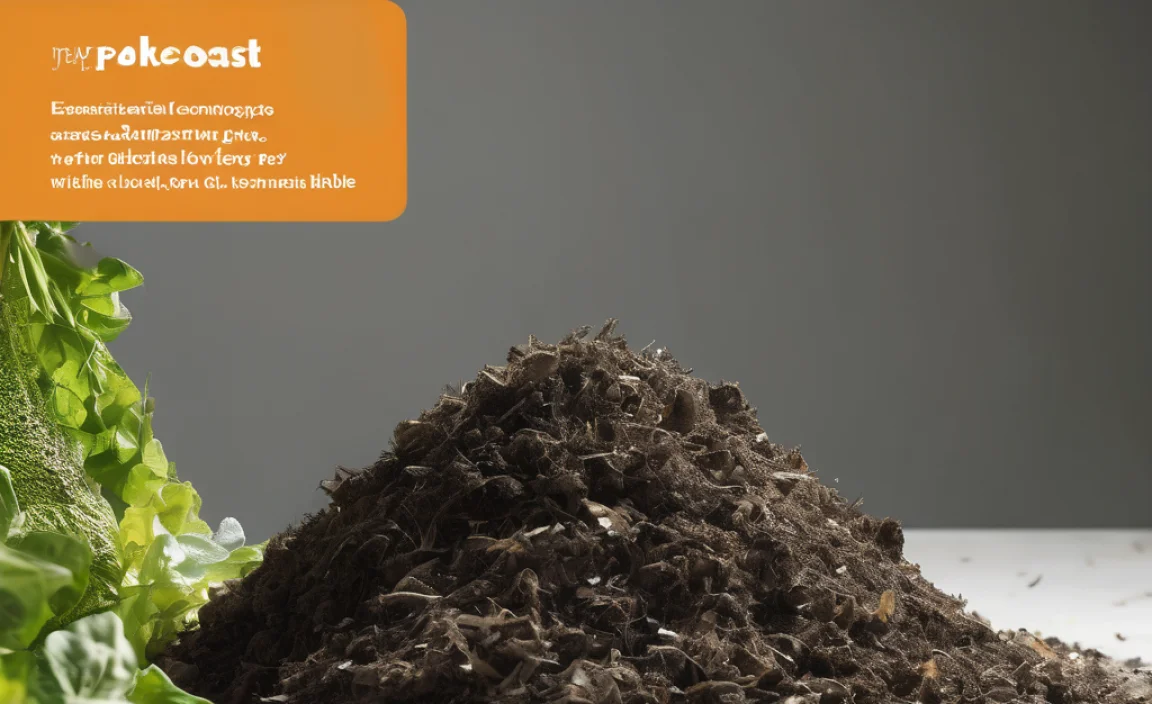Got a clogged sink? No worries! You can easily unclog it using hot water, baking soda and vinegar, or a plunger. For tougher clogs, try a plumbing snake or remove and clean the P-trap. Always start with the simplest method first and work your way up. With a few common household items, you’ll have your sink draining smoothly in no time!
Is your sink draining slowly or not at all? A clogged sink is a common problem, but don’t stress! It’s usually an easy fix that you can handle yourself. No need to call a plumber right away.
This guide will walk you through simple, step-by-step methods to unclog your sink using items you probably already have at home. We’ll start with the gentlest approaches and move to slightly more involved techniques if needed. Let’s get your sink flowing freely again!
What Causes a Clogged Sink?
Understanding what’s causing your sink to clog can help you prevent future blockages. Here are some common culprits:
- Hair: A major offender, especially in bathroom sinks.
- Grease: Solidifies in pipes, trapping other debris.
- Food Scraps: Even small particles can accumulate over time.
- Soap Scum: Builds up and narrows the drainpipe.
- Mineral Deposits: Hard water can lead to mineral buildup.
Being mindful of what goes down your drain can save you from future clogs. Try using drain screens to catch hair and food particles.
Tools and Materials You’ll Need
Before you start, gather these common household items. You probably have most of them already!
- Hot Water: Straight from the tap.
- Baking Soda: A natural cleaning agent.
- White Vinegar: Works with baking soda to break down clogs.
- Plunger: A standard cup plunger.
- Plumbing Snake (or Auger): For tougher clogs.
- Bucket: To catch water.
- Gloves: To protect your hands.
- Wrench: To loosen pipes if needed.
- Screwdriver: To remove drain covers.
Step-by-Step Guide to Declogging Your Sink
Method 1: Hot Water Flush
This is the simplest method and often works for minor clogs.
- Boil Water: Heat up a kettle or pot of water.
- Pour Slowly: Carefully pour the hot water down the drain.
- Repeat: Repeat a few times, allowing the water to sit for a minute or two between pours.
Why it works: Hot water can dissolve grease and loosen some blockages.
Method 2: Baking Soda and Vinegar
A classic DIY solution that’s safe and effective.
- Pour Baking Soda: Pour about one cup of baking soda down the drain.
- Add Vinegar: Follow with one cup of white vinegar.
- Let it Fizz: Let the mixture fizz for 30 minutes.
- Flush with Hot Water: After 30 minutes, flush the drain with hot water.
Why it works: The chemical reaction between baking soda and vinegar helps break down the clog.
Method 3: Plunging
A good old-fashioned method that can create enough suction to dislodge the blockage.
- Remove Stopper: Take out the drain stopper or any strainer.
- Add Water: Add enough water to the sink to cover the cup of the plunger.
- Plunge Vigorously: Place the plunger over the drain opening and plunge up and down vigorously for several minutes.
- Check Drainage: Remove the plunger and see if the water drains. Repeat if necessary.
Why it works: The plunging action creates pressure that can loosen and dislodge the clog.
Method 4: Plumbing Snake (or Auger)
For clogs that are further down the drainpipe.
- Insert the Snake: Carefully insert the end of the plumbing snake into the drain opening.
- Feed it Down: Push the snake down the drain, rotating it as you go.
- Break Up the Clog: When you feel resistance, continue to rotate the snake to break up the clog.
- Remove the Snake: Slowly pull the snake out of the drain, cleaning off any debris.
- Flush with Hot Water: Flush the drain with hot water to clear any remaining debris.
Why it works: The snake physically breaks up and removes the clog.
Method 5: Cleaning the P-Trap
The P-trap is the curved pipe under your sink that traps debris. Cleaning it can often solve the problem.
- Prepare: Place a bucket under the P-trap to catch water.
- Loosen the Nuts: Use a wrench to loosen the slip nuts on both sides of the P-trap.
- Remove the P-Trap: Carefully remove the P-trap, emptying its contents into the bucket.
- Clean the P-Trap: Remove any debris from the P-trap. You can use a small brush or tool to help.
- Reassemble: Reattach the P-trap, tightening the slip nuts.
- Run Water: Run water to check for leaks.
Why it works: Removing and cleaning the P-trap eliminates the physical blockage.
Preventing Future Clogs
Prevention is key! Here are some tips to keep your sink draining smoothly:
- Use Drain Screens: Catch hair and food particles before they enter the drain.
- Avoid Pouring Grease Down the Drain: Dispose of grease in a container and throw it away.
- Flush Regularly with Hot Water: Helps to prevent buildup.
- Baking Soda and Vinegar Maintenance: Pour baking soda and vinegar down the drain monthly as a preventative measure.
Table: Comparing Declogging Methods
| Method | Difficulty | Effectiveness | Best For |
|---|---|---|---|
| Hot Water Flush | Easy | Low to Medium | Minor clogs, grease |
| Baking Soda and Vinegar | Easy | Medium | Grease, soap scum |
| Plunging | Easy | Medium | Various clogs |
| Plumbing Snake | Medium | High | Hair, food, stubborn clogs |
| Cleaning P-Trap | Medium | High | Physical blockages in the trap |
When to Call a Plumber
Sometimes, despite your best efforts, a clog persists. Here are signs it’s time to call a professional:
- Recurring Clogs: Frequent clogs may indicate a deeper issue.
- Multiple Clogged Drains: Could signal a problem with your main sewer line.
- Foul Odors: Persistent bad smells from the drain.
- Standing Water: If water backs up in multiple fixtures.
A plumber has specialized tools and expertise to diagnose and fix more complex plumbing problems.
Safety Tips
Declogging a sink is generally safe, but keep these tips in mind:
- Wear Gloves: Protect your hands from bacteria and harsh chemicals.
- Be Careful with Hot Water: Avoid burns.
- Don’t Mix Chemicals: Never mix different drain cleaners, as this can create dangerous fumes.
- Protect Your Eyes: Wear safety glasses when dealing with drain cleaners or disassembling pipes.
Real-World Examples and Scenarios
Let’s look at some common scenarios and how to address them:
Scenario 1: Slow Draining Kitchen Sink
Problem: Your kitchen sink drains slowly after washing dishes. This is likely due to grease and food particles.
Solution: Start with the hot water flush. If that doesn’t work, use the baking soda and vinegar method. Follow up with plunging if necessary.
Scenario 2: Clogged Bathroom Sink
Problem: Your bathroom sink is completely clogged, and water is pooling. This is often caused by hair.
Solution: Try plunging first. If that doesn’t work, use a plumbing snake to remove the hair. Cleaning the P-trap might also be necessary.
Scenario 3: Recurring Clogs
Problem: You’re constantly dealing with clogged sinks, despite your efforts to prevent them.
Solution: This could indicate a more serious issue with your plumbing system. It’s best to call a plumber to inspect your pipes.
Advanced Tips and Tricks
Here are some extra tips to help you tackle tough clogs:
- Wet/Dry Vacuum: Use a wet/dry vacuum to try to suck out the clog.
- Enzyme Drain Cleaners: These use enzymes to break down organic matter and are gentler than chemical drain cleaners.
- Check the Air Admittance Valve (AAV): This valve helps with proper drainage. If it’s faulty, it can cause clogs. Consult a professional for AAV repairs.
The Science Behind Declogging
Understanding the science behind these methods can help you appreciate why they work:
- Hot Water: Reduces the viscosity of grease, allowing it to flow more easily.
- Baking Soda and Vinegar: The chemical reaction produces carbon dioxide gas, which helps to loosen the clog.
- Plunging: Creates pressure and suction that can dislodge the blockage.
- Plumbing Snake: Physically breaks up and removes the clog.
Conclusion
Declogging a sink doesn’t have to be a daunting task. By following these simple steps, you can tackle most clogs yourself and save money on plumber bills. Remember to start with the gentlest methods and work your way up. Regular maintenance is key to preventing future clogs. Keep those drains clear and flowing freely!
FAQ: Declogging Your Sink
Q: How often should I clean my sink drain?
A: You should flush your drain with hot water weekly. Monthly, use a baking soda and vinegar mixture to prevent buildup.
Q: Can I use store-bought drain cleaner?
A: Store-bought drain cleaners can be effective but contain harsh chemicals. Use them as a last resort and follow the instructions carefully. Consider eco-friendly alternatives first.
Q: What if the baking soda and vinegar don’t work?
A: If baking soda and vinegar don’t work, try plunging or using a plumbing snake. If the clog persists, consider cleaning the P-trap.
Q: How do I know if the clog is in the P-trap?
A: If water backs up quickly when you run the tap, the clog is likely in the P-trap. You might also see debris accumulating there.
Q: Can I use a metal coat hanger instead of a plumbing snake?
A: A straightened coat hanger can work in a pinch, but it’s not as effective or safe as a plumbing snake. Be careful not to damage the drainpipe.
Q: What’s the best way to prevent hair clogs?
A: Use a drain screen to catch hair before it goes down the drain. Clean the screen regularly.
Q: How do I dispose of grease properly?
A: Let grease cool and solidify, then scrape it into a container and throw it away. Never pour grease down the drain.


